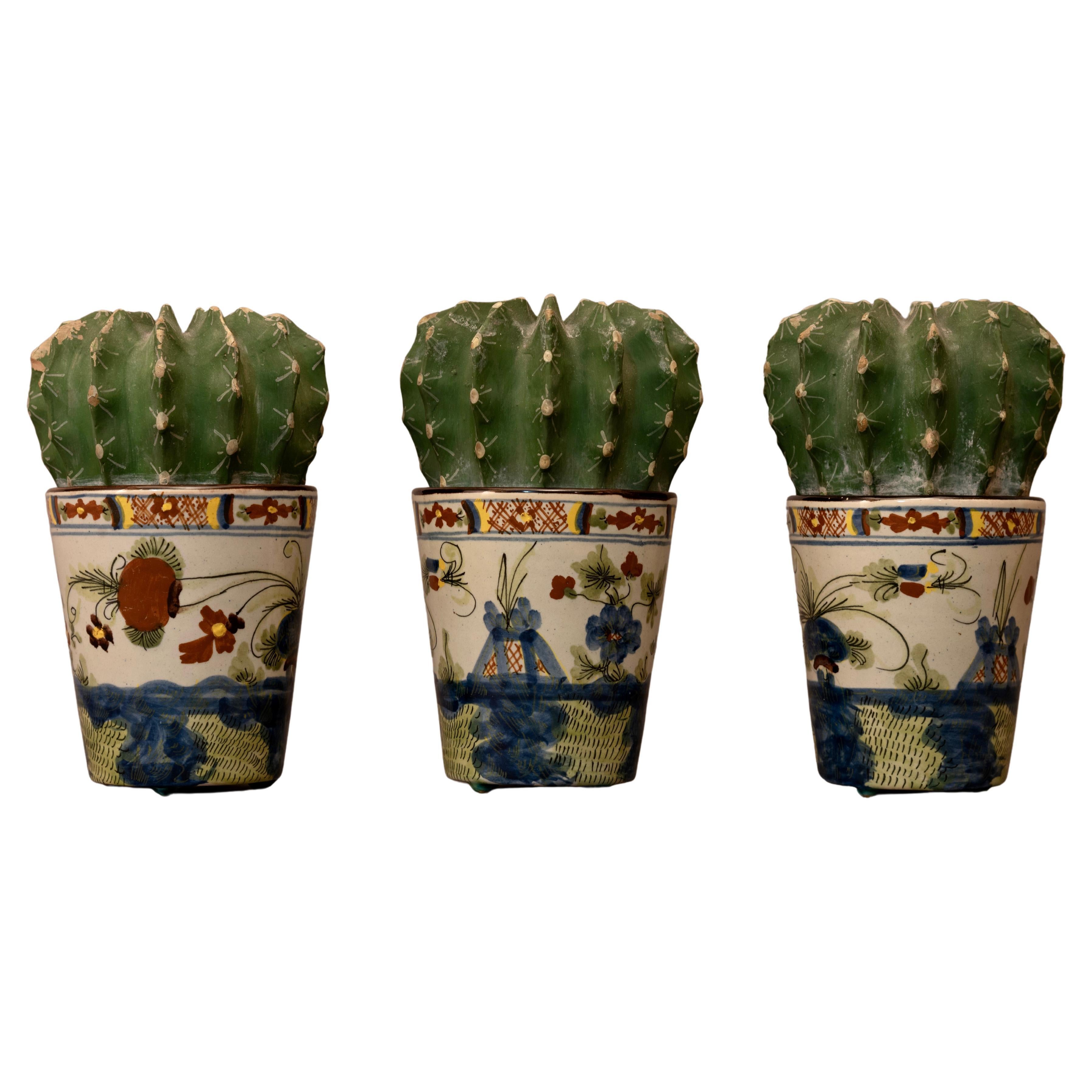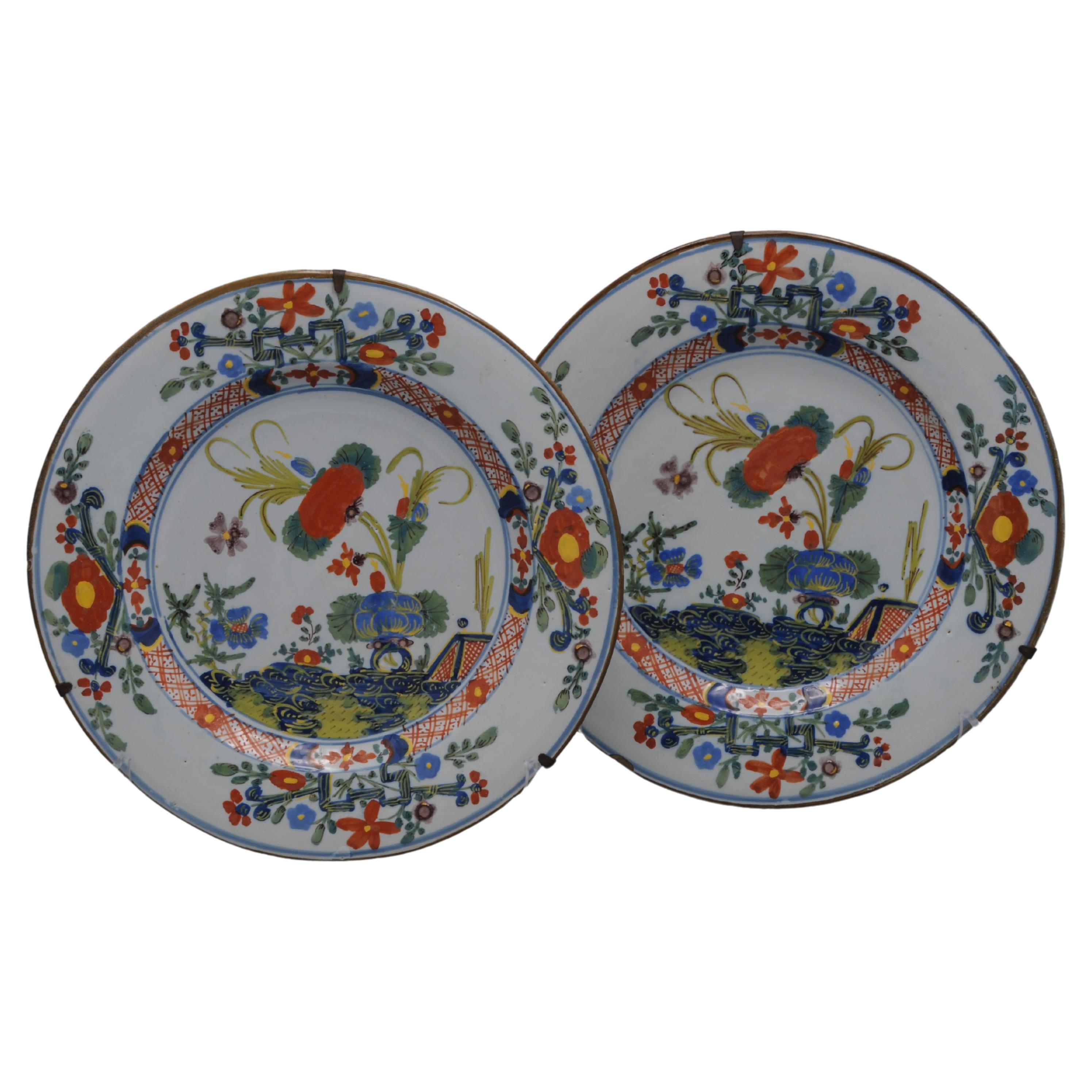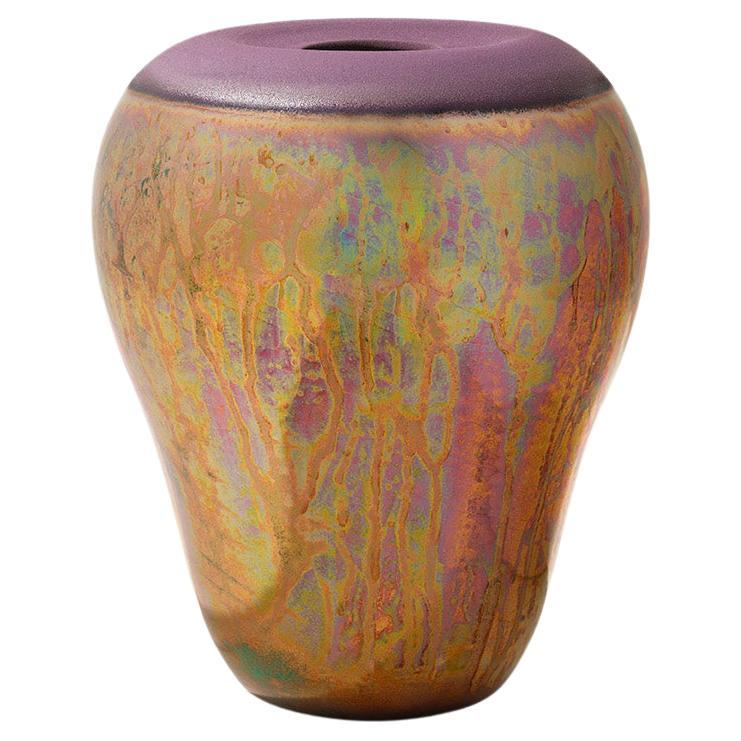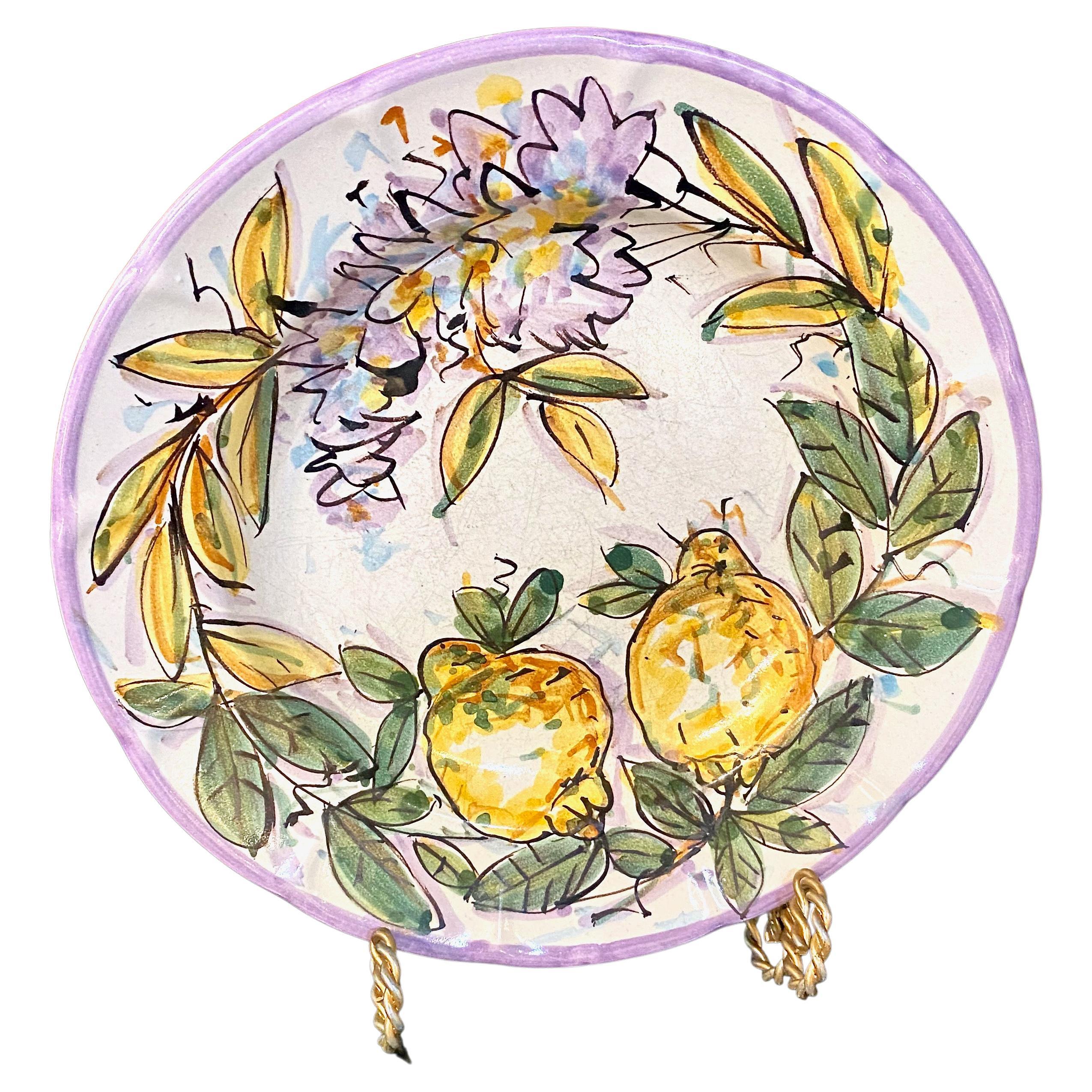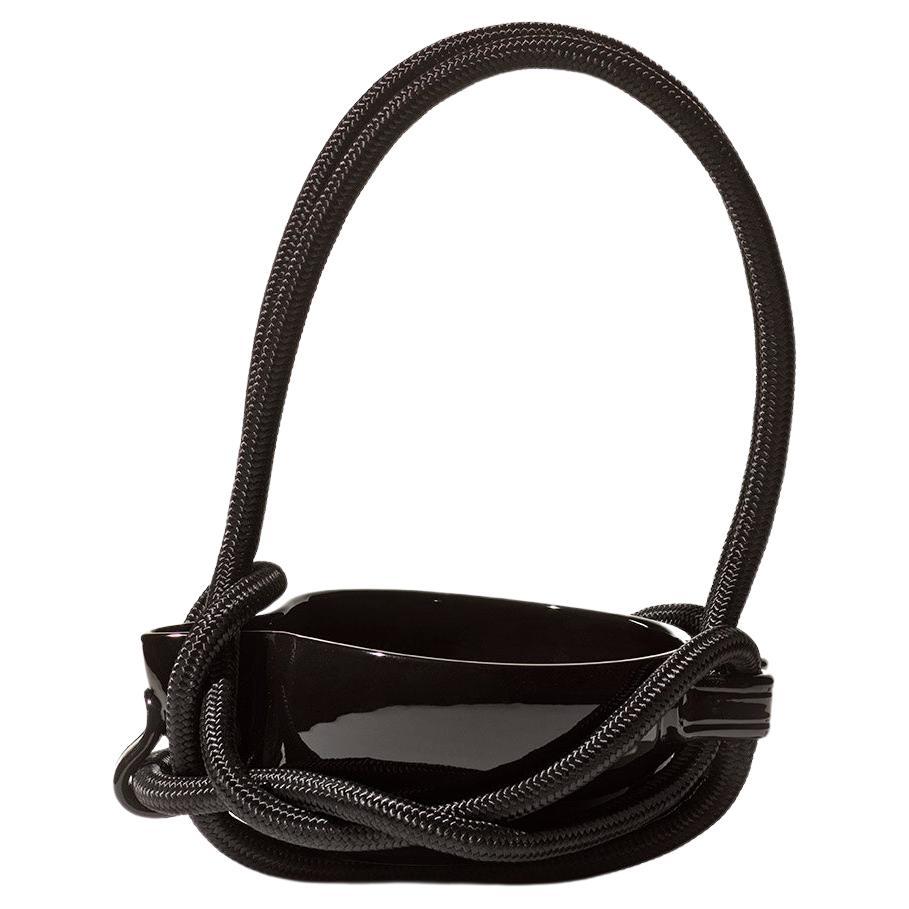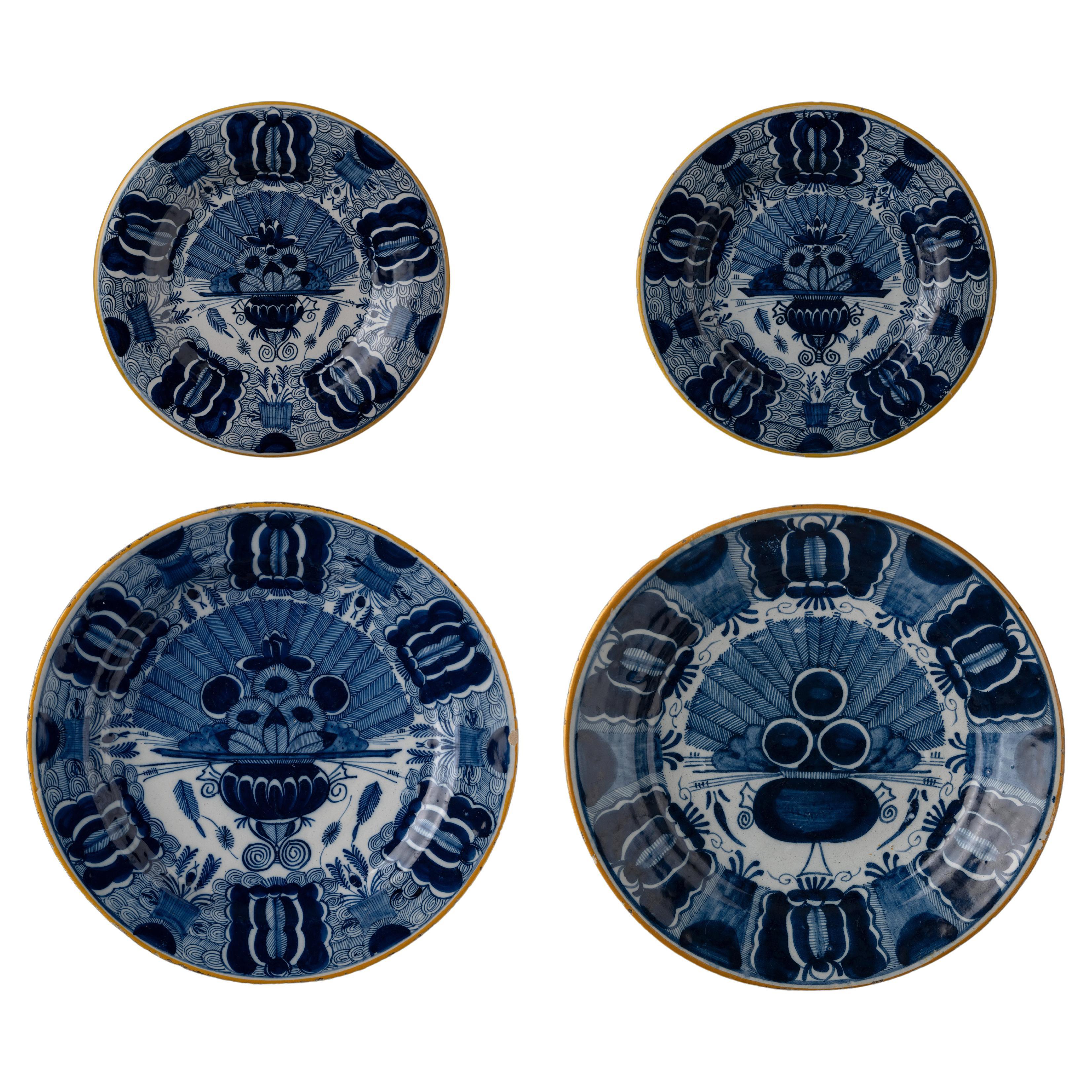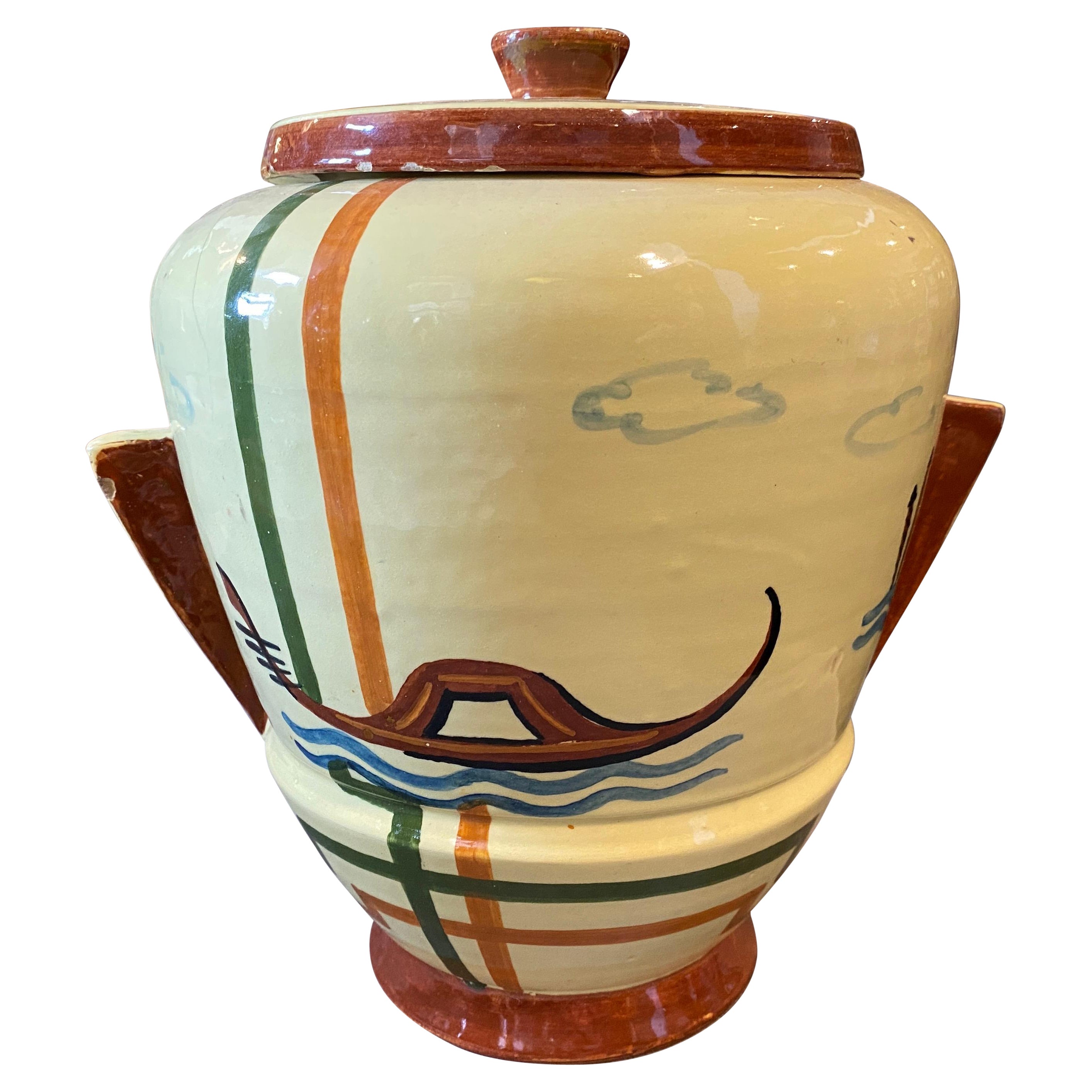
Faenza Italian Ceramic Table Tray Hand Painted Decoration "Garofano"
View Similar Items
Want more images or videos?
Request additional images or videos from the seller
1 of 14
Faenza Italian Ceramic Table Tray Hand Painted Decoration "Garofano"
About the Item
- Dimensions:Height: 1.58 in (4 cm)Width: 14.18 in (36 cm)Depth: 11.42 in (29 cm)
- Style:Chinoiserie (In the Style Of)
- Materials and Techniques:
- Place of Origin:
- Period:
- Date of Manufacture:1975-1979
- Condition:Wear consistent with age and use. The tray is in good condition, small differences in color or slight imperfections are to be considered evidence of craftsmanship.
- Seller Location:Prato, IT
- Reference Number:1stDibs: LU4632228250612
About the Seller
5.0
Platinum Seller
These expertly vetted sellers are 1stDibs' most experienced sellers and are rated highest by our customers.
Established in 1977
1stDibs seller since 2019
234 sales on 1stDibs
Typical response time: 2 hours
More From This SellerView All
- Arts and Crafts Italian Hand Painted Glazed Ceramic TeapotLocated in Prato, TuscanyWe kindly suggest you read the whole description, because with it we try to give you detailed technical and historical information to guarantee the authenticity of our objects. Nice...Category
Mid-20th Century Italian Arts and Crafts Ceramics
MaterialsEnamel
$366 Sale Price20% Off - Deruta Italian Ceramic Set Three Hand Painted Wall PlatesBy DerutaLocated in Prato, TuscanyWe kindly suggest you read the whole description, because with it we try to give you detailed technical and historical information to guarantee the authenticity of our objects. Three delightful and colorful round ceramic wall plates; they were created completely by hand between 1965 and 1968 by a small artisan workshop in Deruta (Perugia, Italy) respecting ancient traditions and raw materials; clay, enamel, colors, water, fire and the hands of the artist: these are the simple elements that lead to the creation of a ceramic article; on the back they have two holes so they can be hung on the wall; they represent characters in Renaissance clothing, each in a different pose: the first is a swordsman who wields a special weapon of the time the "side sword" with S-shaped guard and a dagger with guard very elaborate, useful to trap the blade of the opponent; the "spada da lato" (side sword) is that elegant and handy sword that, from the second half of the fifteenth century and throughout the sixteenth century, is worn on the belt by nobles or rich, a weapon designed for self-defense or to be used in a duel; In fact the second plate represents just a duel in which the two contenders always use "swords side", the one on the left also has a small shield and the one on the right wields an effective and perfidiously fast double-edged dagger; In the third plate is painted a "naccarino" who plays a cylindrical drum (similar to those spread by the Lanzichenecchi from the fifteenth-sixteenth century) held on the side and beaten with two sticks, the "naccarini" were players of small instruments whose presence was required every time you had to give particular solemnity to a public event. We don't know why the people of Deruta began to work the terracotta and to produce vases and manufactured articles in ceramics but we know with all certainty that already in the Middle Ages the city was known for the production of ceramics of high quality, the first written sources make to date the ceramics of Deruta (Perugia) to 1282. In the Renaissance, they were active to Deruta more than fifty furnaces with which they collaborated artists like the Perugino, the Pinturicchio, and Luca Signorelli. The mastery of the artisans and artists of Deruta ceramics...Category
Mid-20th Century Italian Medieval Ceramics
MaterialsCeramic
$524 Sale Price / set20% Off - Deruta Italy Set 5 Ceramic Plates with Cobalt Blue DecorationsLocated in Prato, TuscanyWe kindly suggest you read the whole description, because with it we try to give you detailed technical and historical information to guarantee the authenticity of our objects. Set of five charming ceramic plates with rich cobalt blue decorations on a white background; three plates have a diameter of cm.30 and are the two with both painted on the bottom a little bird surrounded by flowers and vine shoots but with different border decorations, the other is the one with a star painted in the center and a flowery border; the other two have a diameter of cm.33 and have a pomegranate design in the center surrounded by vine shoots, both again with different borders. They were all painted exclusively by hand and faithfully reproduce ancient Umbrian decorations from the 1700s; made between 1950 and 1954 in a small artisan workshop in Deruta (Perugia-Italy). The ceramic mixture is coarse (see photos of the back of the plates) characteristic of Deruta ceramics...Category
Mid-20th Century Italian Neoclassical Revival Ceramics
MaterialsCeramic
- Staffordshire Potteries English Tray with Blue Transferware DecorationsBy Clementson BrothersLocated in Prato, TuscanyWe kindly suggest you read the whole description, because with it we try to give you detailed technical and historical information to guarantee the authenticity of our objects. Lovely and refined English oval ceramic tray; elegant and rich blue decorations have been executed on the white background using the transferware method; the mark on the back tells us exactly that the object was produced by the Clementson Brothers LTD Company between 1901 and 1913 at the Phoenix factory in Shelton, the company made a wide range of objects with this decoration called "Delf" ( see mark no.909 p.150 of "Encyclopaedia of British Pottery and Porcelain Mark"). Transferware, which was very fashionable in the Victorian period, refers to glazed and decorated pottery with a specific treatment that they produced in Staffordshire, England; they used copper plates on which the design was engraved, the plate was then inked and the design transferred to a special fabric that was later placed on the pottery (plates, trays, tureens, etc.) which was glazed and fired; the first to use this printing process were John Sadler and Guy Green of Liverpool in 1756. If we look at the pottery made by this method we will notice that the designs are not perfect and often the ink is smudged: this is their characteristic. A hand-painted plate service could afford few English families, with this method even middle-class families could have a decorated plate service. The Clementson Firm was founded in 1839 by Joseph Clementson, who retired from the business in 1867, leaving the factory to his four sons and son...Category
Early 20th Century British Victorian Ceramics
MaterialsCeramic
- Copeland-Spode English Tray with Blue Transferware DecorationsBy Copeland SpodeLocated in Prato, TuscanyWe kindly suggest you read the whole description, because with it we try to give you detailed technical and historical information to guarantee the authenticity of our objects. Elegant and refined English octagonal ceramic tray; on the white background, soft and rich blue decorations have been executed using the transferware method; in the center we find the poetic and graceful representation of the Severn River and the town of Bridgnorth (the name of this decoration is "Severn"), while the edges of the tray are adorned with sumptuous and spectacular flower and leaf decorations. The Severn River is the longest river in the United Kingdom (350 km), rising in Wales and flowing into the Bristol Channel; Bridgnorth is an ancient Saxon settlement; observing the view of the river and town from his castle at Bridgnorth King Charles I Stuart (1600-1649) said "the most beautiful sight in all my kingdom". On the back of the tray there are 3 imprinted marks including one with final number 14, then we find in the center a blue mark, these indicate to us exactly that the tray was produced in Stoke-on-Trent by the Copeland-Spode company in 1914 (see mark no.1079 p.172 of "Encyclopaedia of British Pottery and Porcelain Mark). The Spode firm was founded in the heart of the Potteries - Stoke-on-Trent by Josiah Spode in 1770. Josiah Spode is most famous for developing the specific design technique that meant underglaze transfers could be printed on earthenware. Later, focusing on porcelain production, Josiah Spode pioneered the development of a new form of porcelain, originally called "Stoke China...Category
Early 20th Century British Victorian Ceramics
MaterialsCeramic
- Ruscha Keramik Germany Vintage Ceramic Vase With Japanese DecorationBy RuschaLocated in Prato, TuscanyWe kindly suggest you read the whole description, because with it we try to give you detailed technical and historical information to guarantee the authenticity of our objects. Black ceramic vase with Japanese decoration painted and enameled in relief, this vintage product was made between 1960 and 1965 by Ruscha Keramik...Category
Mid-20th Century German Mid-Century Modern Ceramics
MaterialsCeramic
$244 Sale Price20% Off
You May Also Like
- Modern Set of Three Faenza Ceramic Cactus VasesBy Ceramiche FaenzaLocated in Roma, ITBeautiful set of Faenza ceramics from the 1950s. They represent a subject as original as interesting: cactus plants placed inside a ceramic vase! These small masterpieces are the wor...Category
Vintage 1930s Italian Mid-Century Modern Ceramics
MaterialsCeramic
$1,965 / set - Faenza - set of plates, Garofano decor late 18th centuryBy Ceramiche FaenzaLocated in DELFT, NLSet of 2 late 18th century Faenza plates with the famous carnation decor 'Garofano' The Garofano design was initially developed in the Italian region of...Category
Antique Late 18th Century Italian Chinoiserie Delft and Faience
MaterialsEarthenware, Faience
- "Crateri", wheeled ceramic vase, reflex and matte purple, Gatti 1928 FaenzaBy Ceramica Gatti 1928Located in Faenza, ITVaso centrotavola molto elegante in ceramica, foggiato al tornio. Smaltato e ingobbiato. Intervento a riflessi metallici in terza cottura. I Crateri compongono la collezione di cer...Category
2010s Italian Modern Ceramics
MaterialsCeramic
- "Crateri", wheeled ceramic vase, reflex and matte light blue, Gatti 1928 FaenzaBy Ceramica Gatti 1928Located in Faenza, ITVaso centrotavola molto elegante in ceramica, foggiato al tornio. Smaltato e ingobbiato. Intervento a riflessi metallici in terza cottura. I Crateri compongono la collezione di cer...Category
2010s Italian Modern Ceramics
MaterialsCeramic
- Vintage Italian Hand Painted Faience Soup DishesLocated in Pasadena, CAThis is superb set of 12 faience "Vietri" Italy Hand Painted Soup plates. The plates were painted and signed by Romolo Apicella. We believe that the plates date to the 1960's, but it...Category
Mid-20th Century Italian Bohemian Delft and Faience
MaterialsFaience, Majolica
$1,075 / set - "Crateri", wheeled bowl, reflex and matte light pink, Gatti 1928 FaenzaBy Ceramica Gatti 1928Located in Faenza, ITCiotola centrotavola molto elegante e leggera in ceramica, ha una forma con bocca aperta interno a riflesso esterno colore rosa opaco. I Crateri compongono la collezione di ceramic...Category
2010s Italian Modern Ceramics
MaterialsCeramic
Recently Viewed
View AllMore Ways To Browse
Retro Hand Painted Glass
Hand Painted Tray
Silver Table Tray
Small Hand Tray
Painted End Table Italy
Vintage Hand Painted Plate Italy
Faience Italy
Painted Italian End Tables
Retro Wooden Tray
End Of Day Glass
Tuscany Silver
Retro Oriental Table
Type Tray
Nineteenth Century Ceramics
City Tray
Vintage Wooden Tray Table
Vintage End Of Day Glass
Medieval Wooden
